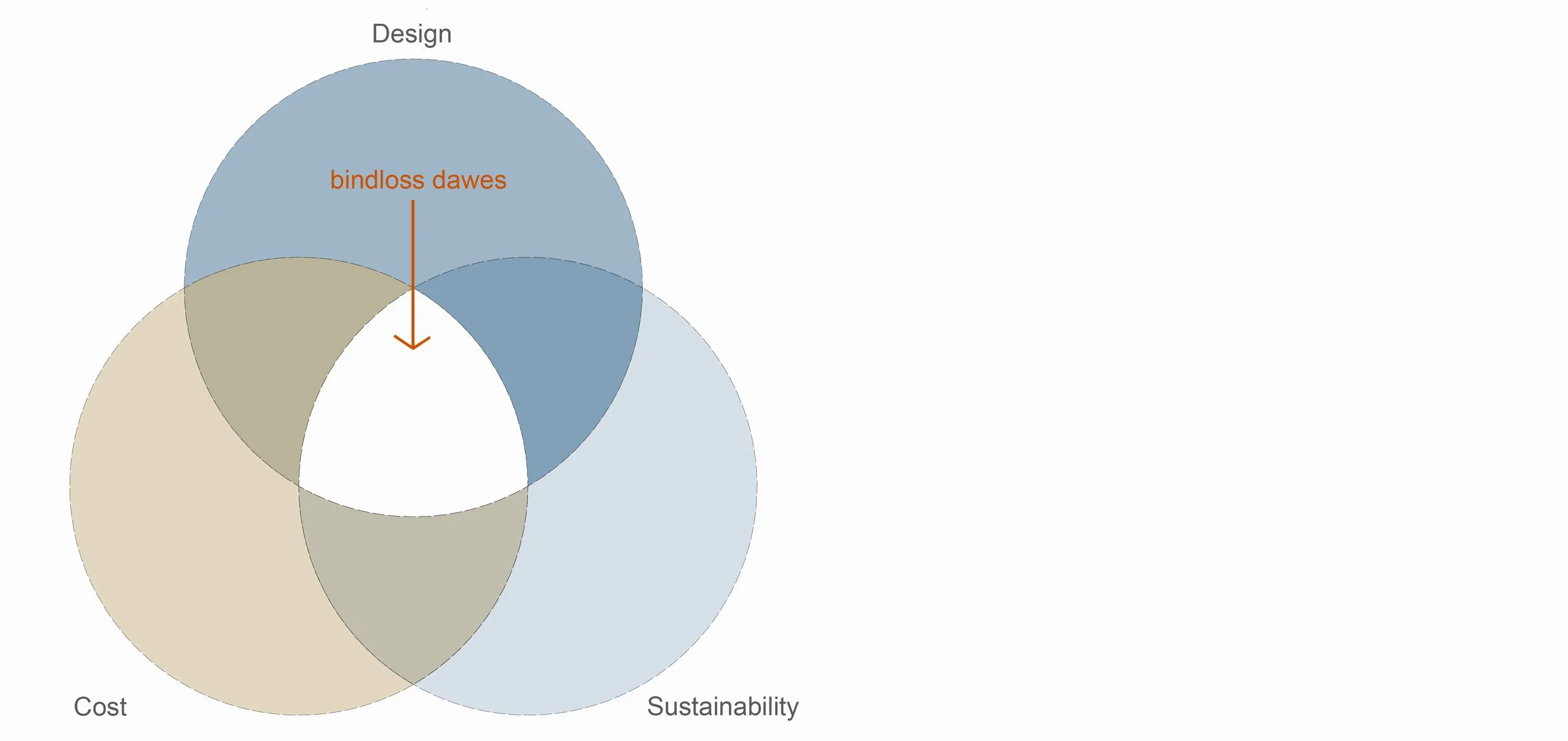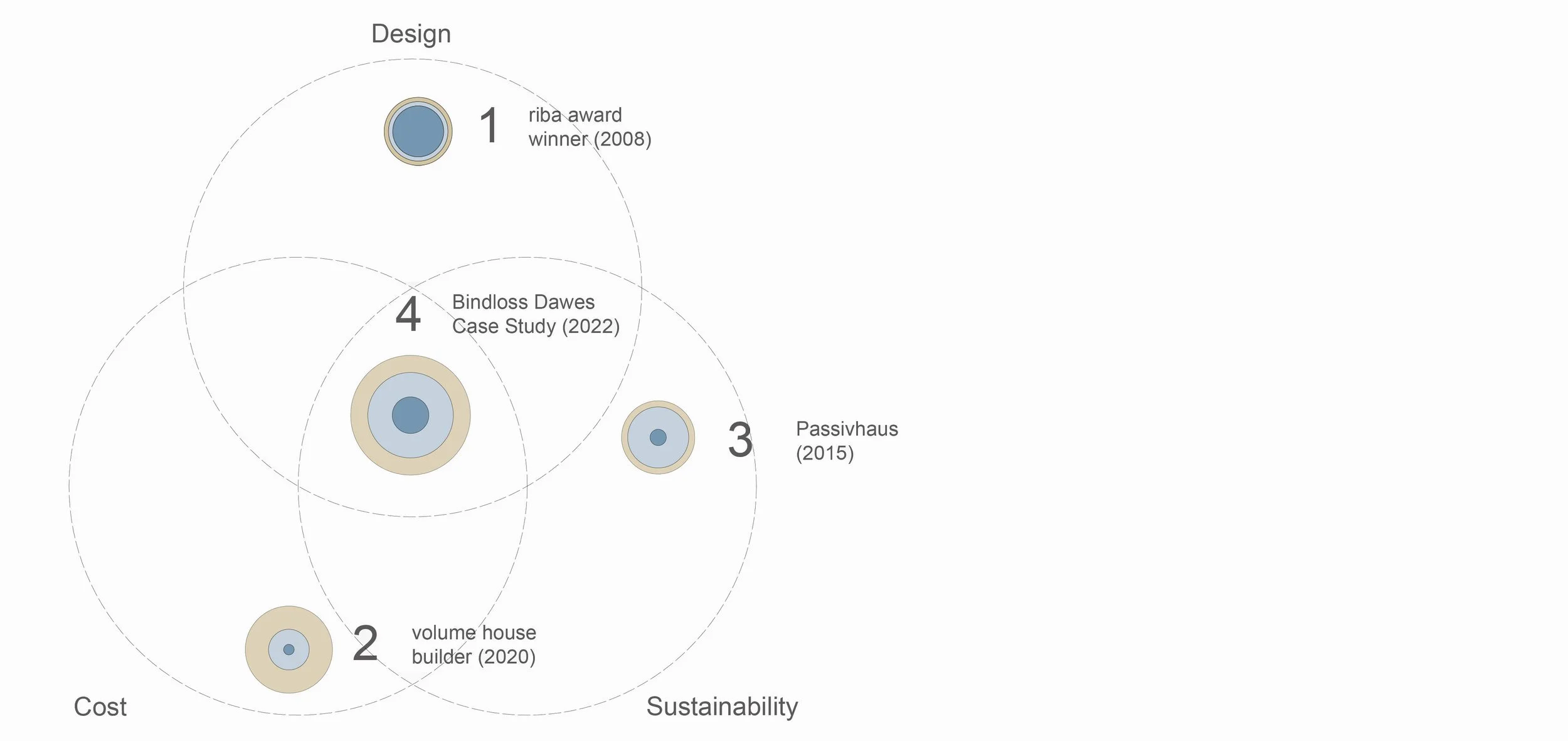Beautiful, Affordable, Sustainable Architecture
Architecture is realised through a multitude of decisions and actions. It is uncontroversial that the intention of this process should be buildings of quality, however defining the criteria for quality is complex and contested.
As the climate crisis plays out in our daily lives, both public sentiment and government regulation are rightly demanding that the construction industry improves the environmental performance of our buildings. However this comes at a cost, and with the country in recession, with high inflation, labour shortages and stagnant land values, the challenge of balancing affordability and sustainability are greater than ever.
And yet architecture must strive to be beautiful. Our buildings should be meticulously designed, embody craftsmanship and quality, and create environments that inspire us and form the backdrop to our lives.
Working towards architecture that is beautiful, affordable and environmentally responsible
Finding a balance between these sometimes conflicting concerns is at the forefront of our work. We are a design-led practice with a background in delivering quality architecture , however in the last few years we have become increasingly focused on dove-tailing in concerns around cost and sustainability.
To achieve this we have been carrying out extensive research into both the economic and environmental performance of contemporary buildings, assessing their successes and failures in order to garner best principles. We are trying to find a balance that ensures that our work is beautiful, affordable and environmentally sustainable.
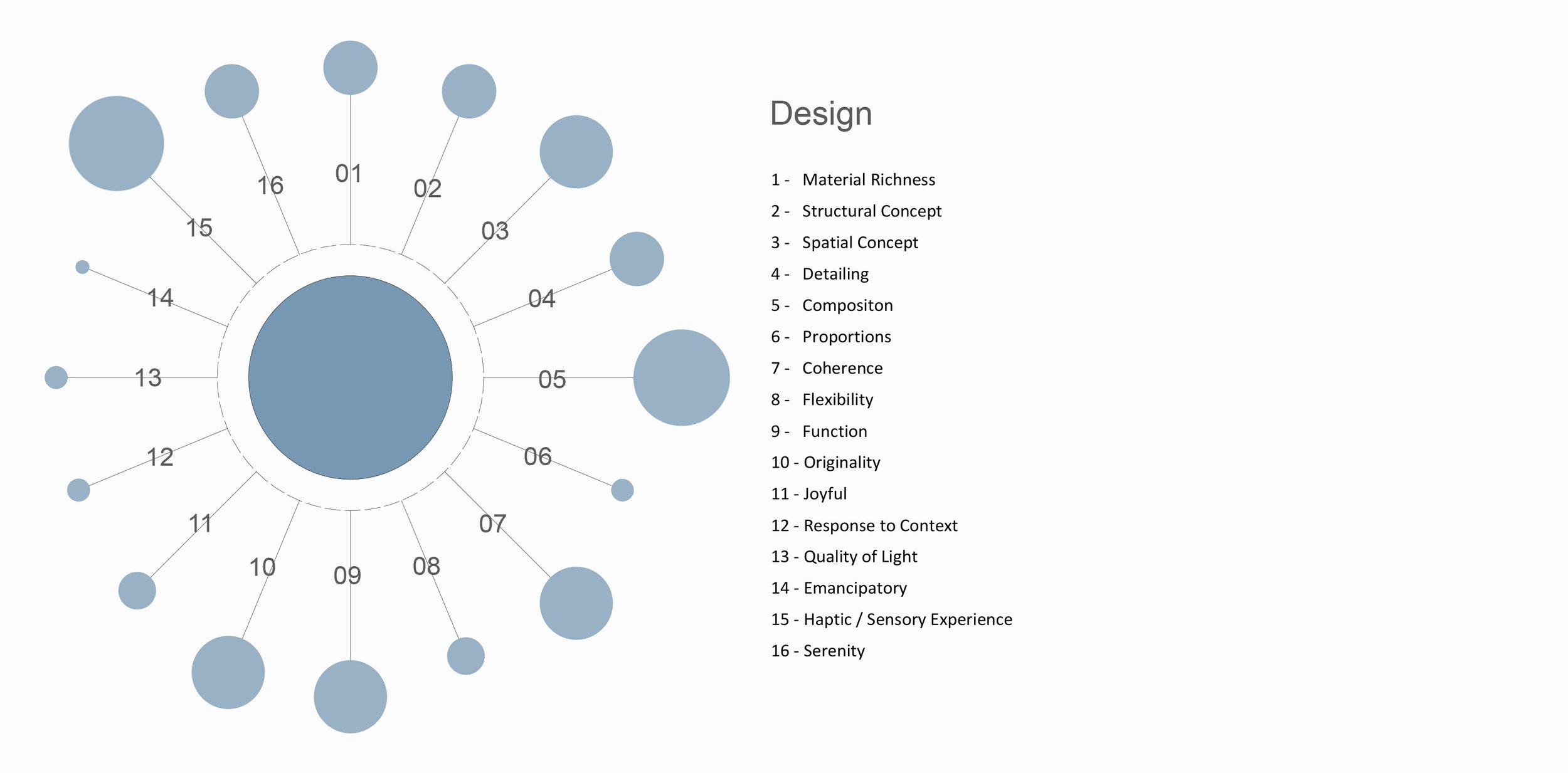
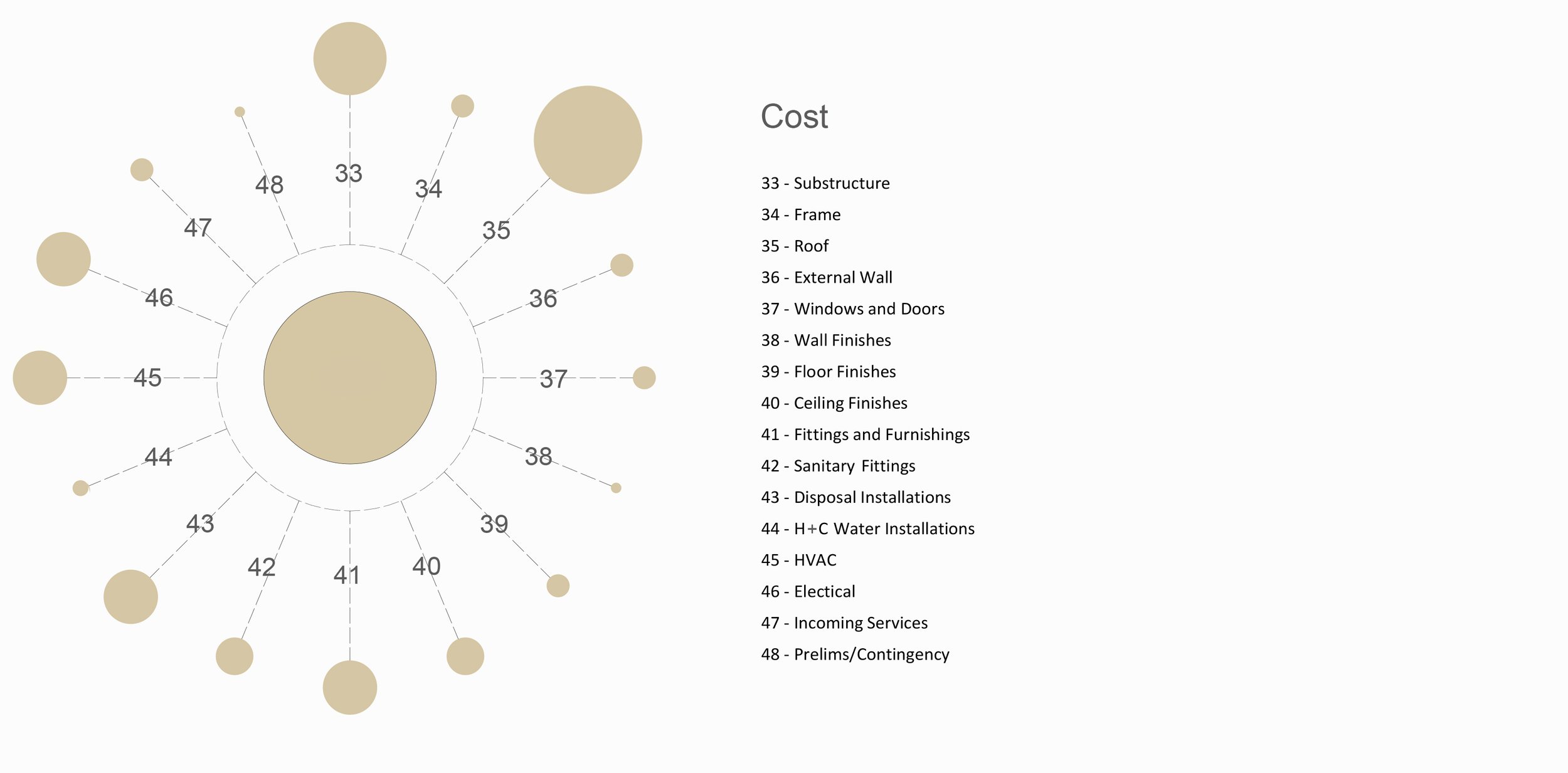
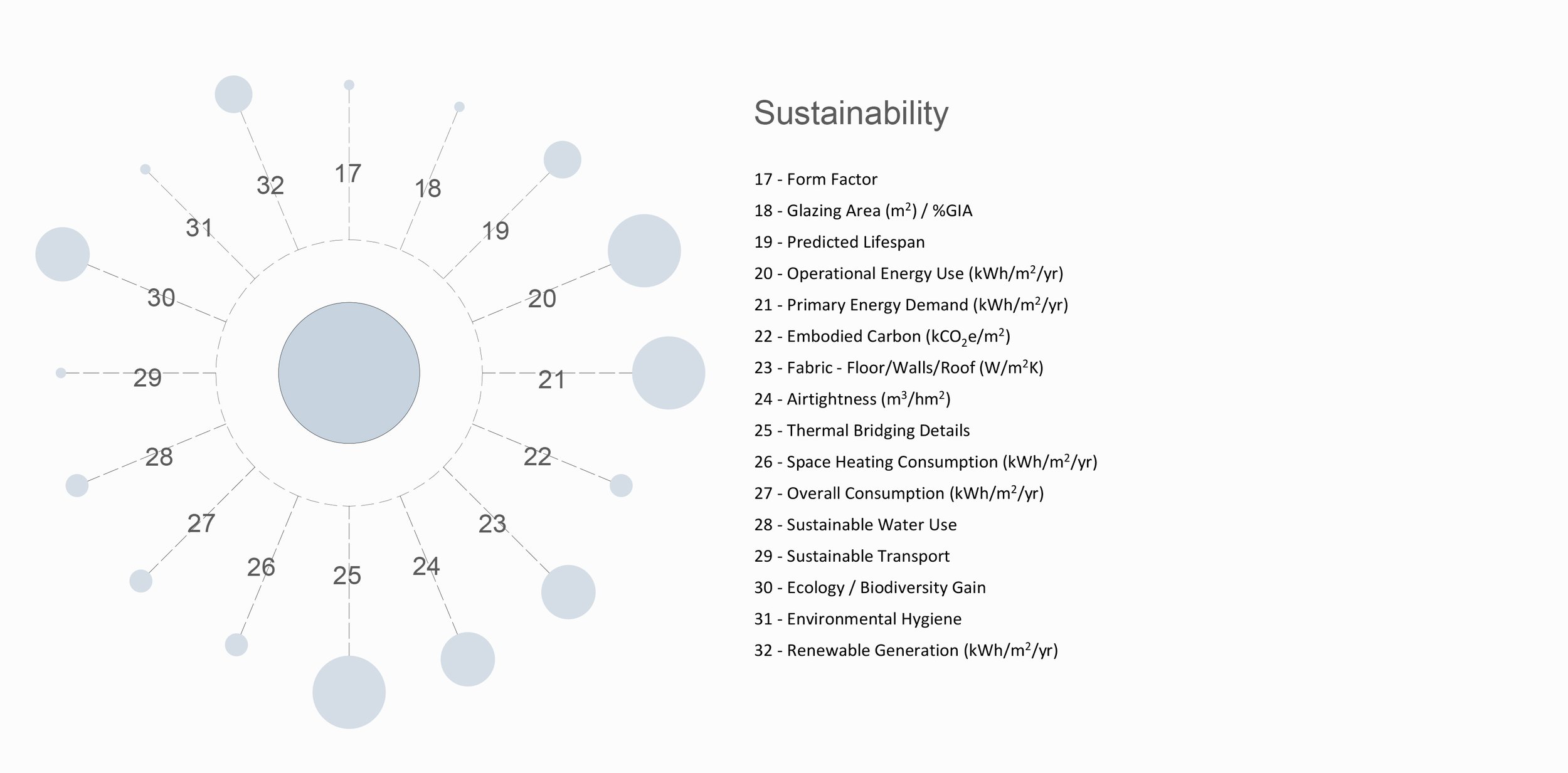
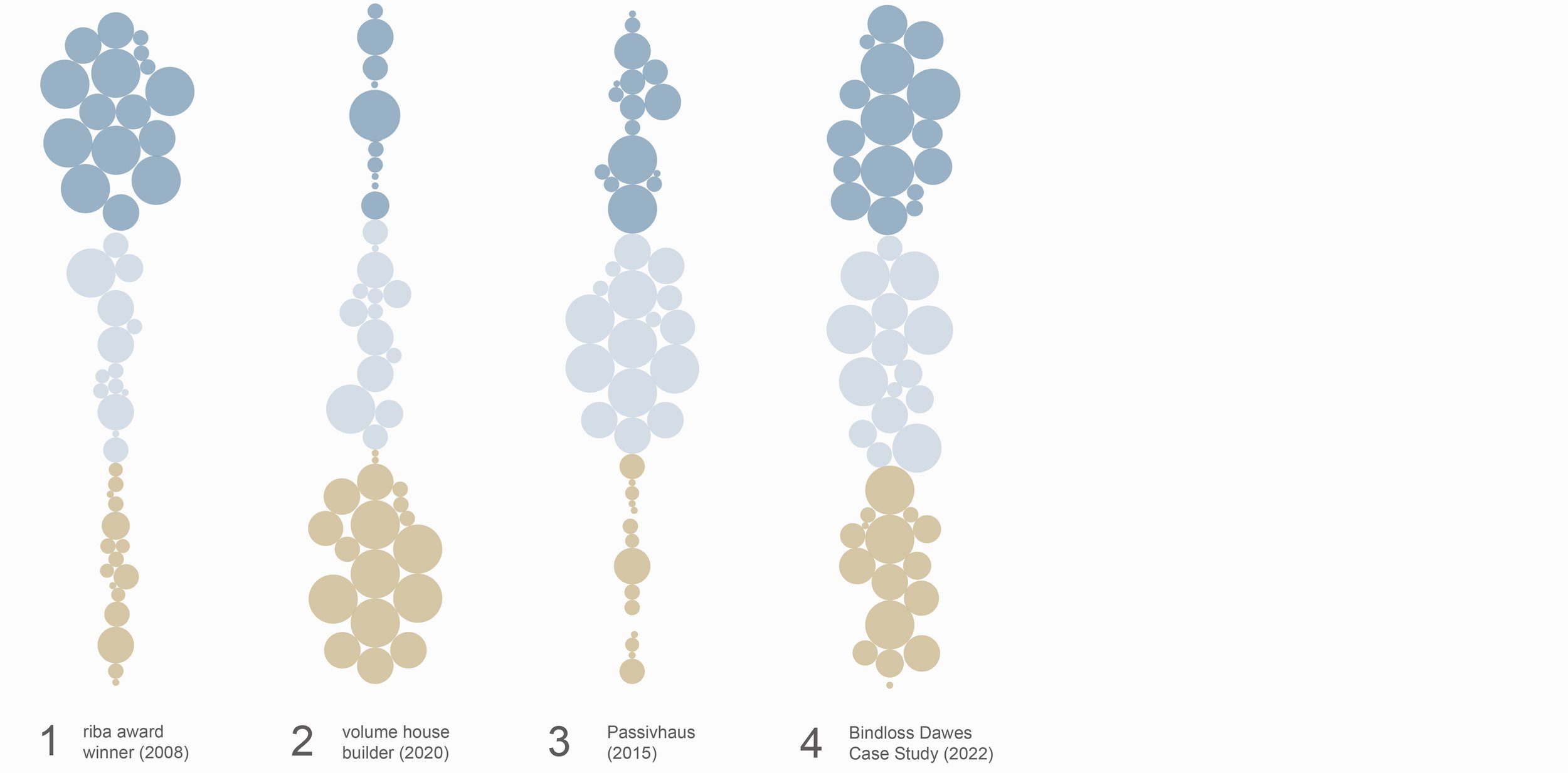
During the design process, together with clients and builders, we are now applying our methodology and assessment criteria to inform our work. Environmental and Cost performance are assessed quantitatively, the former by applying criteria set by Passivhaus, BREEAM, Future Homes Standard, and the UK Green Building Council. Cost and value are assessed using Royal Institute of Chartered Surveyors (RICS) methodology, comparing building components from low-cost contemporary projects, as well as monitoring and comparing our own tender returns.
Assessing design is more subjective, applying qualitative assessments (such as Proportion, Spatial Quality, Light) to capture the attributes of beauty and quality in architecture.
Past and Future projects: Assessed against three crucial standards
Although our methodology is evolving and imperfect, this approach is already producing results. Our House for a Herdsman, currently on site and due for completion in summer 2023, will be a carbon net-zero house for under £2250/sqm, as well as embodying a strong architectural concept, rigorous deign and meticulous detailing.
Our ambition is to keep learning and evolving this process in order to improve future projects, monitoring the changes in the construction industry and the economy. By developing processes, designs, technologies and construction methods that enable our work to be simultaneously beautiful, affordable and environmentally sustainable, we hope to make architecture that is both uplifting and relevant to our changing world.

